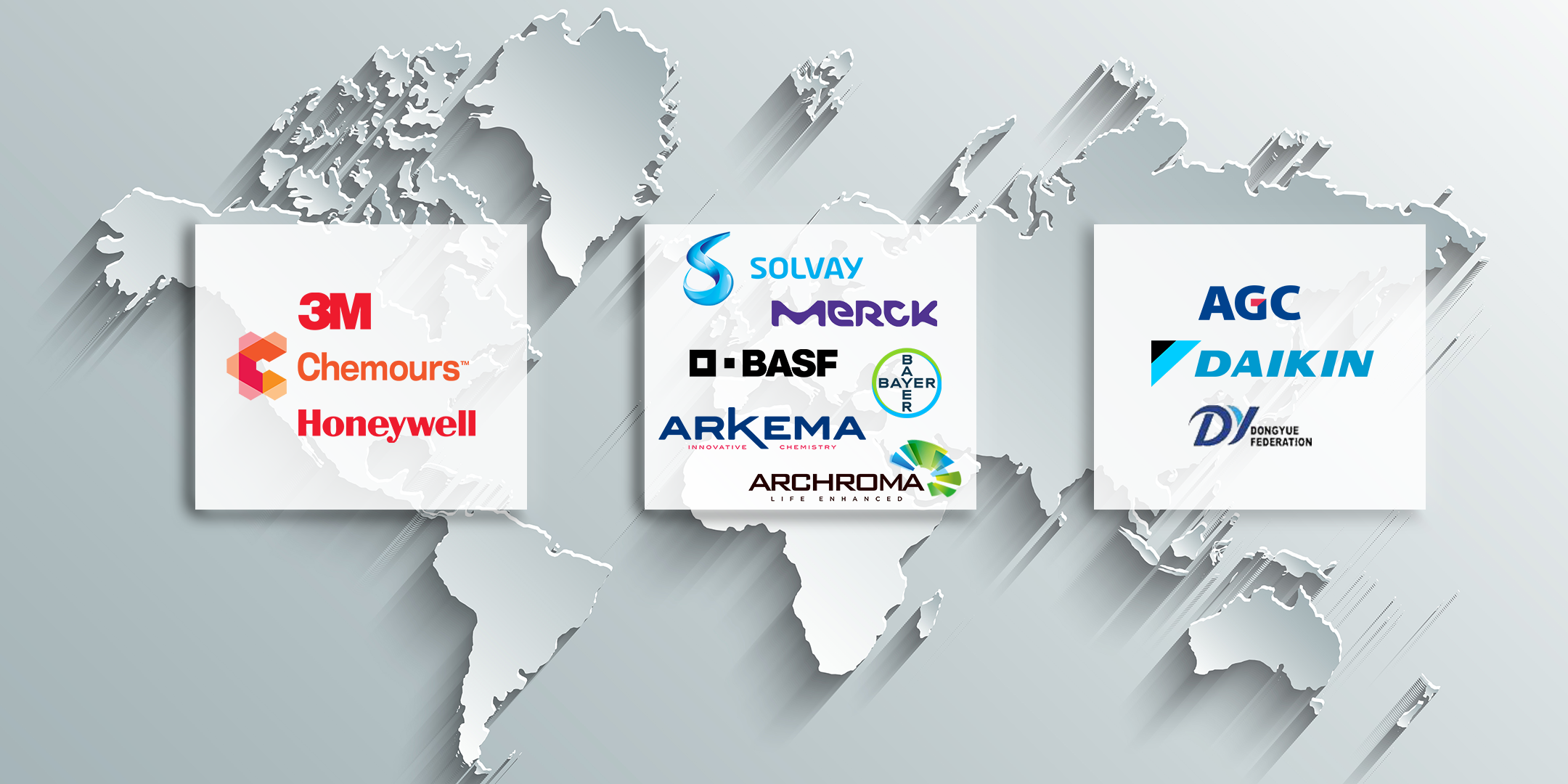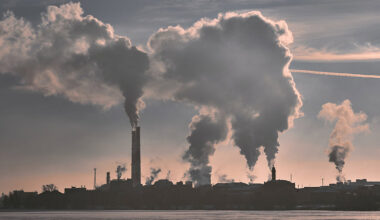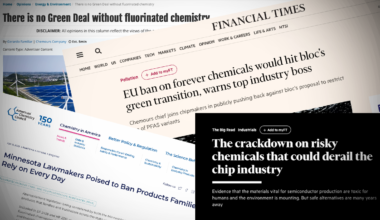In almost every Swedish city, down to the most insignificant townlets and banjo-playing, run-of-the-mill whistle-stops, there’s not one – but at least two! – independent pizza places. Travel north, south, east, and west; the smell of tomato sauce and melted cheese is never far away. (ChemSec is located in Sweden BTW).
Considering how big of a problem PFAS chemicals have mounted up to be, you’d be excused to think that PFAS producers are like Swedish pizza places – independent and everywhere. Turns out it’s actually the opposite. Only a dozen companies are responsible for the production of most PFAS chemicals.
Uncovering who these companies are, and how much money they are making of PFAS, however, is way more challenging than ordering a pizza Margherita (this is the last pizza analogy, promise).
Despite the chemical industry being a significant contributor to climate change and producing millions of tonnes of hazardous chemicals annually, information about it is hard to come by. Industry transparency requirements barely exist. Not even shareholders know the production and sales volumes of different chemicals in the companies they own.
“Despite the chemical industry being a significant contributor to climate change and producing millions of tonnes of hazardous chemicals annually, information about it is hard to come by.”
ChemSec, however, in an investigative effort, has decided to shine a light on PFAS production worldwide. Through our own data sources that we’ve been building up during the last decades, as well as report digging, ChemSec is confident in saying that the twelve companies named below are the biggest PFAS producers in the world. Additionally, we have also sized up the corporate profits and the societal costs connected to PFAS.
So, buckle up and let’s dive in!
Get the latest PFAS information
Subscribe to our newsletter.
The peanut PFAS market
Even though the pollution of PFAS is huge, the money generated from the sales of PFAS is not. Last year, the global market size for PFAS was just over $28 billion (€26B). That might sound like a lot of money, but it’s peanuts compared to the market size of all chemicals, which sits at $4.73 trillion. That means that PFAS production is just 0.5% of the total chemical production.
Ok – so the PFAS market is size $28 billion. However, that figure is made up of the total net sales. The question is, how much of that is actually profits?
We can make a pretty well-educated guess. The American chemical mega-corporation 3M, which recently announced it would stop producing PFAS in the coming years, claimed that its total net sales from PFAS are $1,3 billion. The profit margin is 16 per cent. That means that 3M earns around $200 million on PFAS annually. Assuming that 3M’s 16 per cent profit margin represents the industry as a whole, that would mean that global PFAS profits are only about $4 billion.
$4 billion is a lot of money, sure. But compared to the annual profits from all chemical products, only in the US, which sits at $77 billion, it’s not a whole lot.
Sometimes the numbers in this piece are in euros, other times in dollars – why? We wanted to use the same currency as the source we cited. To make it easier when you’re reading you can treat the currencies at a one to one ratio. If you want to be exact, the conversation rate of a euro is 0,91 of 1 dollar.
The real costs of PFAS
Let’s now turn to the other side of the PFAS cost-benefit equation: what are the costs of PFAS? The Nordic Council of Ministers estimates that the direct healthcare costs from exposure to PFAS in Europe alone are €52-84 billion annually. If you add the fees for removing PFAS from the environment, so-called remediation, the figures are even more staggering.
The issue of contaminated soil is especially troublesome. Earlier this year, a large newsroom investigation revealed that Europe has over 17 000 sites contaminated with PFAS. If we assume that the contamination in global soils is similar, remediation costs would be over €2000 billion.
Another high remediation cost is water purification. One of the world’s leading PFAS experts, Professor Hans Peter Arp, estimates the cleaning costs to be €238 billion, only in the EU.
Extrapolate that figure to apply globally, and the cost of PFAS to the world is €16 trillion, per year. And that’s a conservative estimate, not including damages to animals or reduction of property prices, for example.

Say it one more time!
Who will pick up this tab? If PFAS producers were to pay for the pollution they caused, many would go bankrupt. However, this considerable liability risk is rarely reflected by these companies. As ChemSec’s investigation of the 12 biggest PFAS producers shows further down, PFAS are mentioned only in very few instances in the sustainability reports. In contrast, the words “sustainable/sustainability” is mentioned 1913 times.
Read the press release and op-ed
Are PFAS vital to society?
As the EU recently released an unprecedented proposal to ban a large number of PFAS, many industry proponents have argued that the proposal goes too far. We surely believe that some companies will take the opportunity to sue the Commission, as the current proposal aims to ban all PFAS.
In any case, there are many upsides to a complete ban on PFAS, a so-called group restriction. Not only does it offer legislative predictability that benefits industry, but it also serves as a means of minimising the risk of regrettable substitution, where one harmful chemical is replaced with another that is equally or more harmful. Unfortunately, this practice has been common in the realm of PFAS.
For instance, PFOA, a PFAS variant, was used in the production of fluoropolymers until health and environmental concerns arose, leading to its eventual prohibition. However, the industry then shifted to the comparable PFAS substance Gen-X, which turned out to be a catastrophic decision.

A central argument for keeping PFAS on the market is that these chemicals are, in fact, essential in many areas, such as in medicine and climate change mitigation, for example. Thus, one might also argue the social gain from PFAS is immense and that a fair assessment of its social value should take that into account. Sure, it might not be so profitable, but we cannot do without PFAS, one could claim.
ChemSec is the first to agree that there are specific cases where PFAS should be allowed to use until alternatives are available. This is not only the case for PFAS, but for many hazardous chemicals. If a specific chemical plays an integral role in, let’s say, a cancer medicine, and there’s no clear-cut alternative available, then by all means – carry on.
There is, however, a tendency to overestimate the role of PFAS as essential. It’s a lot of noise for something that is actually, really… insignificant. For example, looking at the fluoropolymer market in the EU, a sub-category to PFAS where you find a majority of essential uses, only about 8 per cent of the total production volume goes towards the often-cited examples of renewable energy, semiconductors and pharmaceuticals (which, by the way, is exempted from the EU ban proposal). The rest goes towards transportation, textiles, electronics and cookware, where there are, in most cases, viable alternatives.

The biggest shareholders
These 12 PFAS-producing companies have room for improvement. Shedding light on their production of PFAS can push them towards better chemistry and a more future-proof business model.
Shareholders play a vital role in driving change. By understanding the impact of their investments, they can demand better practices. That’s why we included the three biggest owners of each company in our research below. We believe that many of these investment firms are completely unaware of the PFAS portfolios of the companies they are investing in.
Well, not anymore.
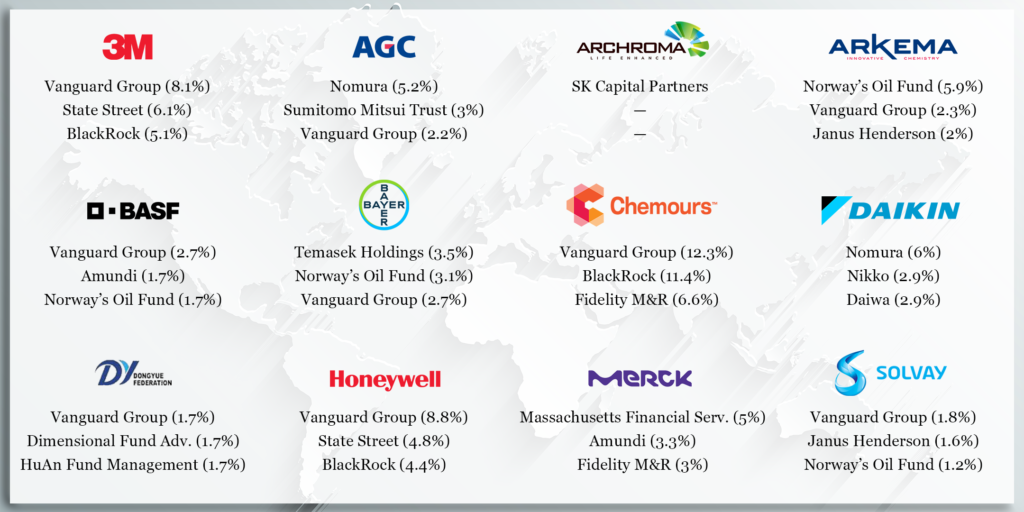
The 12 PFAS producers
Please note: the companies are listed in alphabetical order.
3M
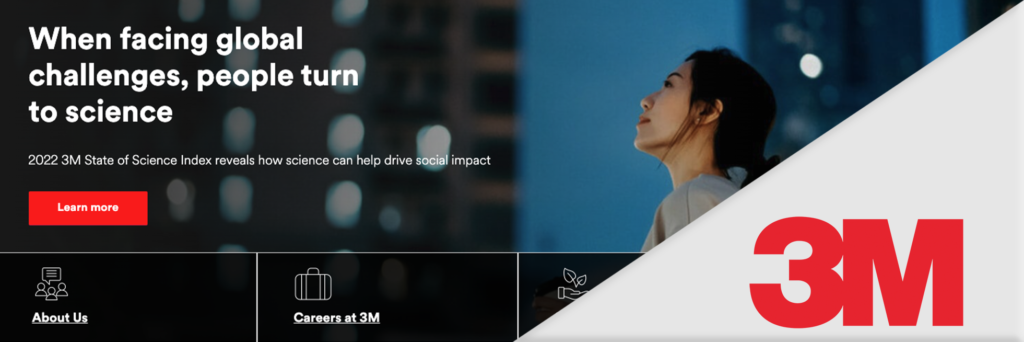
ISIN: US88579Y1010
HQ: Minnesota, US
Net sales 2022 (all chemicals): 34,2 billion USD
Total mentions of sustainability/sustainable: 14
(Source: Annual report 2022)
Total mentions of PFAS: 200
(Source: Annual report 2022)
Fluoropolymer market share: 5%
Number of PFAS on the SIN List: 54
(Source: https://sinproducers.chemsec.org/)
AGC Inc.
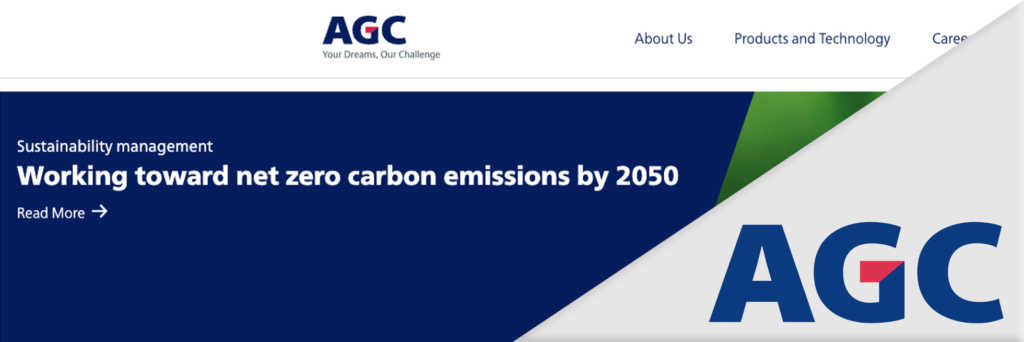
ISIN: JP3112000009
HQ: Tokyo, Japan
Net sales 2022 (all chemicals): 15,4 billion USD
Total mentions of sustainability/sustainable: 26
(Source: AGC Company Overview 2023)
Total mentions of PFAS: 0
(Source: AGC Company Overview 2023)
Fluoropolymer market share: 4%
Number of PFAS on the SIN List: 15
(Source: https://sinproducers.chemsec.org/)
Archroma
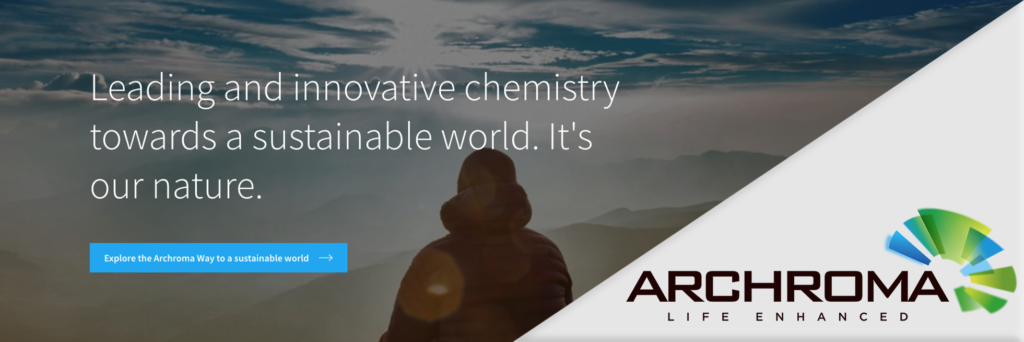
ISIN: N/A (not publicly traded)
HQ: Pratteln, Switzerland
Net sales 2022: N/A (not publicly traded)
Total mentions of sustainability/sustainable: N/A
Total mentions of PFAS: N/A
Fluoropolymer market share: N/A
Number of PFAS on the SIN List: 14
(Source: https://sinproducers.chemsec.org/)
Arkema
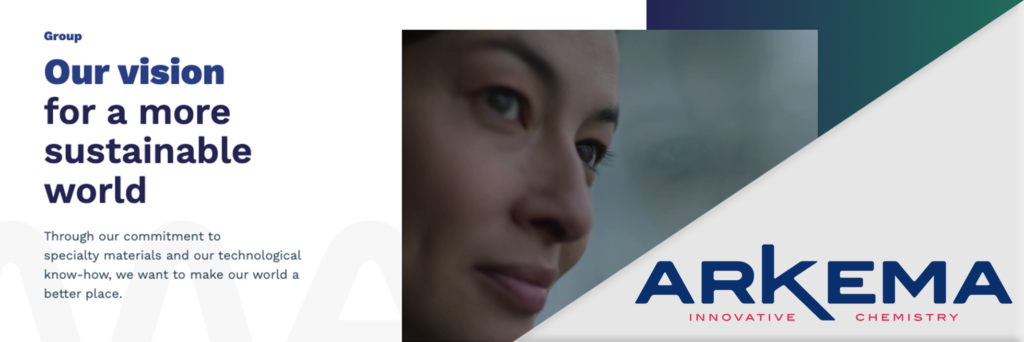
ISIN: FR0010313833
HQ: Colombes, France
Net sales 2022 (all chemicals): 12,3 billion USD
Total mentions of sustainability/sustainable: 410
(Source: URD 2022)
Total mentions of PFAS: 3
(Source: URD 2022)
Fluoropolymer market share: 7%
Number of PFAS on the SIN List: 10
(Source: https://sinproducers.chemsec.org/)
BASF
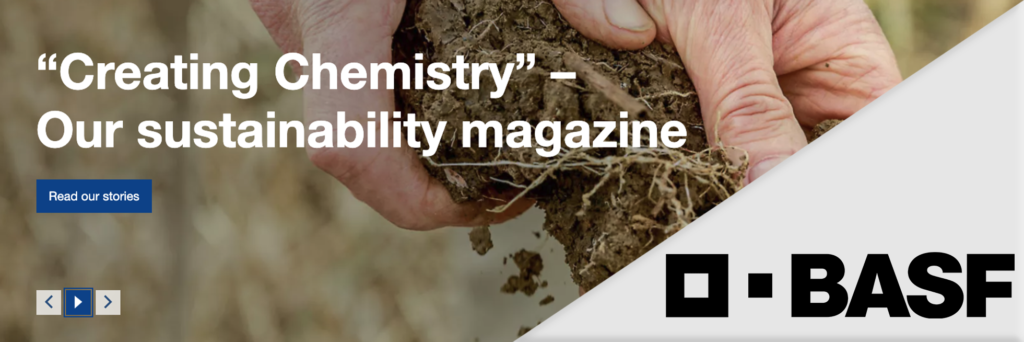
ISIN: DE000BASF111
HQ: Ludwigshafen, Germany
Net sales 2022 (all chemicals): 93,1 billion USD
Total mentions of sustainability/sustainable: 416
(Source: Integrated Report 2022)
Total mentions of PFAS: 2
(Source: Integrated Report 2022)
Fluoropolymer market share: N/A
Number of PFAS on the SIN List: 11
(Source: https://sinproducers.chemsec.org/)
Bayer
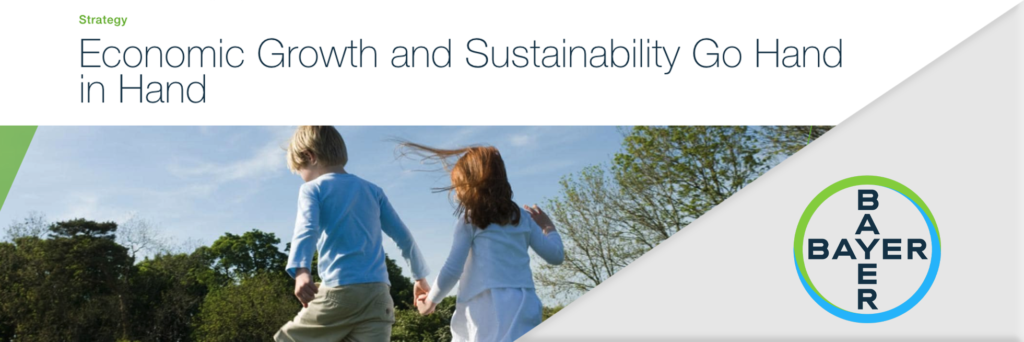
ISIN: DE000BAY0017
HQ: Leverkusen, Germany
Net sales 2022 (all chemicals): 54,1 billion USD
Total mentions of sustainability/sustainable: 200
(Source: Annual report 2022)
Total mentions of PFAS: 0
(Source: Annual report 2022)
Fluoropolymer market share: N/A
Number of PFAS on the SIN List: 11
(Source: https://sinproducers.chemsec.org/)
Chemours

ISIN: US1638511089
HQ: Delaware, US
Net sales 2022 (all chemicals): 6,7 billion USD
Total mentions of sustainability/sustainable: 38
(Source: Annual report 2022)
Total mentions of PFAS: 139
(Source: Annual report 2022)
Fluoropolymer market share: 12%
Number of PFAS on the SIN List: 64
(Source: https://sinproducers.chemsec.org/)
Daikin

ISIN: JP3481800005
HQ: Osaka, Japan
Net sales 2022 (all chemicals): 23,5 billion USD
Total mentions of sustainability/sustainable: 34
(Source: Integrated Report 2022)
Total mentions of PFAS: 0
(Source: Integrated Report 2022)
Fluoropolymer market share: 11%
Number of PFAS on the SIN List: 12
(Source: https://sinproducers.chemsec.org/)
Dongyue

ISIN: KYG2816P1072
HQ: Shandong Province, China
Net sales 2022 (all chemicals): 2,9 billion USD
Total mentions of sustainability/sustainable: 15
(Source: Annual report 2021)
Total mentions of PFAS: 0
(Source: Annual report 2021)
Fluoropolymer market share: 13%
Number of PFAS on the SIN List: 2
(Source: https://sinproducers.chemsec.org/)
Honeywell

ISIN: US4385161066
HQ: North Carolina, US
Net sales 2022 (all chemicals): 144 billion USD
Total mentions of sustainability/sustainable: 27
(Source: Annual report 2021)
Total mentions of PFAS: 0
(Source: Annual report 2021)
Fluoropolymer market share: N/A
Number of PFAS on the SIN List: 14
(Source: https://sinproducers.chemsec.org/)
Merck

ISIN: DE0006599905
HQ: Darmstadt, Germany
Net sales 2022 (all chemicals): 23,7 billion USD
Total mentions of sustainability/sustainable: 277
(Source: Annual report 2022)
Total mentions of PFAS: 0
(Source: Annual report 2022)
Fluoropolymer market share: N/A
Number of PFAS on the SIN List: 18
(Source: https://sinproducers.chemsec.org/)
Solvay

ISIN: BE0003470755
HQ: Brussels, Belgium
Net sales 2022 (all chemicals): 14,3 billion USD
Total mentions of sustainability/sustainable: 379
(Source: 2021 Integrated Report)
Total mentions of PFAS: 10
(Source: 2021 Integrated Report)
Fluoropolymer market share: 8%
Number of PFAS on the SIN List: 36
(Source: https://sinproducers.chemsec.org/)

